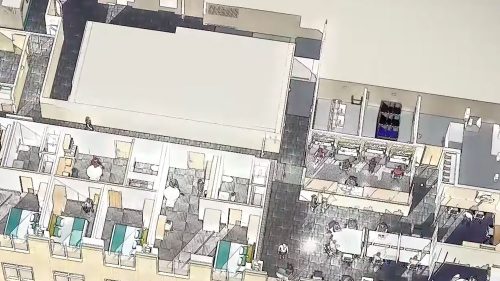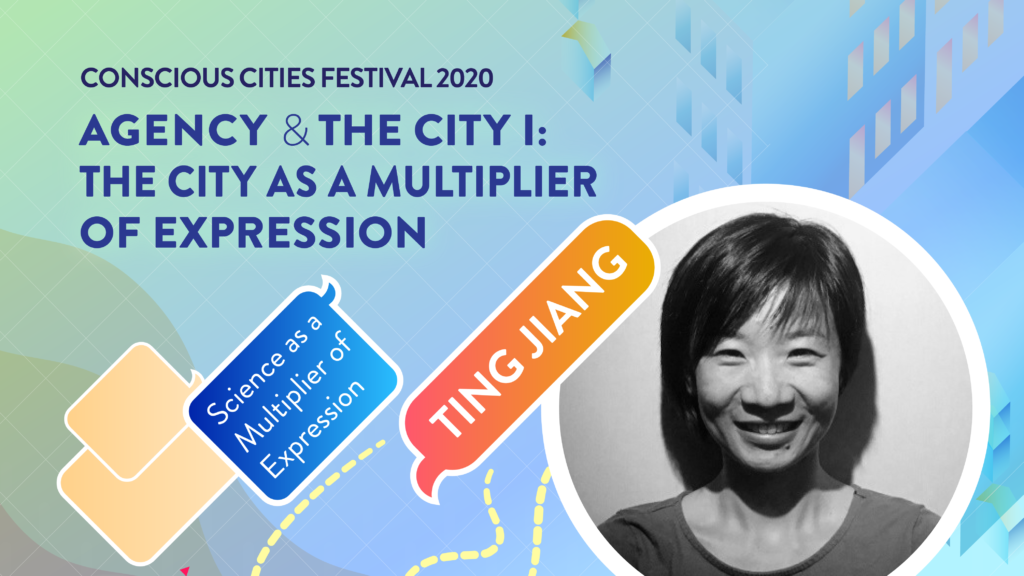Good research does not guarantee good design. Implementing insights from a study on the impact of exterior views on patient recovery1 is far from a straightforward process when balanced with other functional, social and economic forces present on a project. Yet, having suffered more broken bones than I would like to admit, I can vouch that my experience was better in recovery rooms with exterior views. Whether those windows I looked out of were designed based on research or not, why wouldn’t we wish to be reasonably certain the spaces we live in perform their intended purpose?
Good design, in my eyes, is human-experience-centric, environmentally conscientious and socially just. Good research can lead to improved design. An investigation of British schools highlights the type of studies that may benefit architects. Peter Barrett et al.’s multi-factor analysis found environmental factors between classrooms with an “appropriate level of stimulation” and poorly-designed ones “account for “25% of the learning progression of pupils.”2 Hindsight might incline skeptics to dismiss the finding as obvious, but without attempts to pinpoint what is and is not working in situ well-intentioned designers will unknowingly continue to repeat the same mistakes.
A “mistake” can only be identified relative to a value judgment. A derelict strip mall hemorrhaging energy that is well used by its community is arguably a better use of resources than a mechanically efficient, appealing new building that goes unused. This understanding would be missed if looking solely at energy data. It is therefore important to cross reference different types of research. Quantitative evidence and data should be assessed against more open-ended qualitative questionnaires, surveys and observations.
How and when data is used in the design process impacts the outcome. Opponents of using research to inform design decisions object that no amount of polling pre-automobile horse riders would result in data leading to the invention of the car. If anything, it might lead them astray to pursue more aerodynamic horse buggies and limit their ingenuity. Proponents highlight examples of individuals so out of touch with users they would prioritize the continuity of aesthetic building elements in a new opera hall over providing seats with unobstructed views of the stage. Both sides miss the point. Our options are not limited to mindlessly following data or foolishly ignoring it. We can keep our ears open to inputs and feedback while thinking critically and creatively about them.
De Hogeweyk represents this approach to design. An inventive humane building and operational strategy informed by research, the Dutch care facility for elderly people with severe dementia reduces agitation by providing environments like those inhabitants were used to living in prior to their memory problems.3 The grounds mimic a small village with restaurants, two-story bungalows, multiple squares, a café and a theater. Residents can go anywhere within the gated complex without being reminded they are ill. There are no white coats. Trained caretakers are seamlessly integrated in the community as grocers, gardeners and housemates. Molenaar & Bol & Van Dillen Architects’ design’s careful promotion of exercise, adequate light and social activities cannot definitively be said to be the reason patients use less medication than they did prior to its opening in 2009,4 but studies support this explanation.5 The project demonstrates how integrating research in the design process can increase the likelihood of success, defined here as increased satisfaction of patients6 and decreased use of mood-altering drugs.
Architects are at a crossroads. Building owners are asking for people who can help improve the contentedness of employees, performances of students and outcomes of patients.7 Mining big data for insights and integrating those into the design of physical spaces will become an increasingly important skill. If we brush aside the opportunity to use research as an architectural design tool, we might be ceding our role as the designer to others more adept at integrating such findings. If we embrace the challenge, we will become more capable and sought after.
There are barriers to performing and publishing research on buildings and their occupants. Owners who desire to attract tenants and customers to their spaces are not incentivized to share information about how their buildings may not be working properly. Likewise, architects do not wish to develop a reputation of incompetence or invite a lawsuit by asking about everything that did not turn out as planned. However, if studies are sufficiently anonymized prior to being made public everyone stands to gain.
What resources are available today to practitioners? Data USA provides an open platform one-stop-shop containing public US Government data.8 An architect and their client deciding where to locate a new hospital could review demographic information to help ensure all the locations in consideration have a sufficient nearby patient population. The Building Research Information Knowledgebase is a searchable online portal of peer-reviewed research projects relevant to architects and includes numerous post-occupancy evaluations.9 The Center for the Built Environment produces holistic research on buildings available through eScholarship.10 Their projects develop new ways to measure occupants’ responses to indoor environments and link them to physical measurements of environmental quality.
Virtual Singapore and DoppelLab represent a glimpse of interfaces that promise to provide designers with a more interactive way to engage with information than searching through repositories of data and studies. Virtual Singapore is a dynamic three-dimensional model of the city and collaborative platform that incorporates real-time data from a network of sensors. An urban planner could analyze the walkability of different areas of the city not convenient for all, but otherwise highly used in order to identify locations such as a footbridge only served by stairs that might most benefit from the addition of a ramp or elevator.11 DoppelLab is an application that allows a user to hear and see sounds that have been sufficiently obfuscated for privacy as well as see the temperature and foot traffic for every room of a building in real-time. All the collected sensor data is rendered with intuitive graphics and overlaid on a digital model of the building being analyzed. “Planners, designers and building occupants alike can see how the infrastructure is being used. Where do people gather and when? What effects do changes in the building have on how people interact and work within it?”12
Again, what can be done to push the built environment towards becoming human-experience-centric, environmentally conscientious and socially just? There is no easy answer to this. The rapid growth of sustainability rating systems’ popularity among design professionals, consumers and building owners over the past decades might serve as a guide for the nascent movement emphasizing the occupant experience. Architecture, landscape and urban planning departments would be improved by incorporating more science and research in their curricula.13 I believe it is important to produce nuanced, rigorous and optimistic work and discuss it in equally nuanced, rigorous and optimistic terms. I hope this article is one step in that direction. If you concur, please join me in working to realize these aspirations.
References
1 An example of a study on the impact of exterior views on patient recovery is Roger Ulrich’s 1984 paper “View through a Window May Influence Recovery from Surgery” compared recovering patients that were assigned to rooms with a “wall-view” against those with a “tree view.” “Patients with the tree view had shorter postoperative hospital stays, had fewer negative evaluative comments from nurses, took fewer moderate and strong analgesic doses, and had slightly lower scores for minor postsurgical complications.” Ulrich, Roger S (1984) “View through a Window May Influence Recovery from Surgery.” Science, New Series, Volume 224, Issue 4647: 402-421.
2 Barrett, Peter, et al. (2013) “A Holistic, Multi-level Analysis Identifying the Impact of Classroom Design on Pupils’ Learning.” Building and Environment. Volume 59: 678-689.
3 John Zeisel et al.’s article on the best practices for Alzheimer special care units recommend providing patients settings that are familiar and residential in scale. In “settings that are … institutionally furnished and operated, residents will become restless and disoriented.” Whereas “in settings that are small in both number of residents and the size of spaces, and that also have decor and furnishings that feel like home, residents will be relaxed.” Zeisel, John, et al. (1994) “Best practices: An Environment Behavior (E-B) Model for Alzheimer Special Care Units.” The American Journal of Alzheimer’s Care and Related Disorders & Research. Volume 9, Issue 2: 4-21.
4 “In 1993, when (de Hogeweyk) was still a regular nursing home, 50 percent of patients were being given antipsychotic drugs. In 2015, six years after the village was created, only 8 percent were.” Gallagher, Paul (2018) “This Dutch Dementia Village Could Arrive in Kent by 2020.” i News https://inews.co.uk/news/health/dutch-dementia-village-kent-england/
5 Patricia Heyn et al. found “exercise was associated with statistically significant positive treatment effects in older patients with dementia and cognitive impairments.” Heyn, Patricia, et al. (2004) “The Effects of Exercise Training on Elderly Persons with Cognitive Impairment and Dementia: A Meta-Analysis.” The Archives of Physical Medicine and Rehabilitation. Volume 85, Issue 10: 1694-1704. Judith Haffmans et al. found “bright light therapy has a positive effect on motor restless behavior in dementia.” Haffmans, Judith et al. (2001) “Bright Light Therapy and Melatonin in Motor Restless Behaviour in Dementia: A Placebo-Controlled Study.” Colette Fabrigoule et al. found “regular participation in social or leisure activities … were associated with a lower risk of subsequent dementia.” Fabrigoule, Colette, et al.(1995) “Social and Leisure Activities and Risk of Dementia: A Prospective Longitudinal Study.” Journal of the American Geriatrics Society. Volume 43, Issue 5: 485-490.
6 “In a client satisfaction survey from 2010, the home scored 9.1 out of 10, compared with 7.5 countrywide.” Anonymous (2018) “A New Way of Caring for the Vulnerable Old.” The Economist https://www.economist.com/news/europe/21734412-netherlands-pursues-promising-costly-experiment-new-way-caring-vulnerable
7 An instance of hospital operators and owners increasing desire for architects and researchers who can help produce spaces that improve the outcomes of patients is clear in the rollout of the Hospital Consumer Assessment of Healthcare Providers and Systems (HCAHPS) in 2006. Hospitals have long collected information on patient satisfaction for their own internal use, but HCAHPS “is the first national standardized, publicly reported survey of patients’ perspectives of hospital care.” It has been used to create incentives for hospitals to improve quality of care. This required transparency and impact on hospitals’ reimbursement rates means they have a strong personal stake in their buildings precisely and positively contributing towards their patients’ experiences. https://www.cms.gov/Medicare/Quality-Initiatives-Patient-Assessment-Instruments/HospitalQualityInits/HospitalHCAHPS.html
8 https://datausa.io/
9 https://www.brikbase.org/
10 https://www.cbe.berkeley.edu/research/publications.htm
11 https://www.nrf.gov.sg/programmes/virtual-singapore
12 Paradiso, Joseph A. and Dublon, Gershon (2014) Extrasensory Perception: How a world filled with sensors will change the way we see, hear, think and live. Scientific American: 36-41.
13 It should be acknowledged there are examples of architecture schools that have begun to incorporate more science and research in their curricula such as The New School of Architecture and Design which offers a Certificate in Neuroscience for Architecture and the Università Iuav di Venezia which offers a master’s degree in Neuroscience Applied to Architectural Design to name a few.








